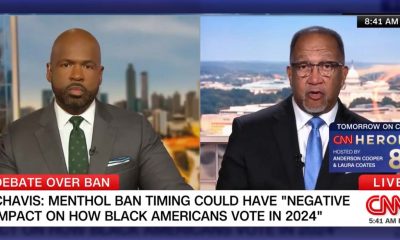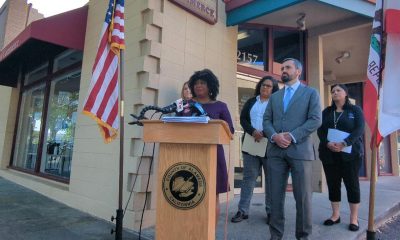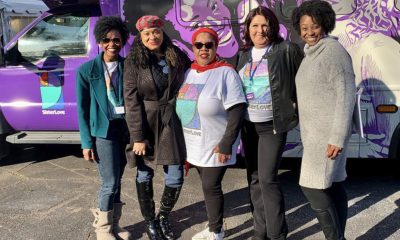Health
How safe is CBD oil?
MINNESOTA SPOKESMAN-RECORDER — From bath oils and soft drinks to skin creams and coffee bars, everywhere you look, you can see what looks like the next hot product: CBD oil.
 By Dr. Charles Crutchfield III MD
By Dr. Charles Crutchfield III MDFrom bath oils and soft drinks to skin creams and coffee bars, everywhere you look, you can see what looks like the next hot product: CBD oil.
CBD, or cannabidiol, oil is a member of the cannabinoid family of molecules found in marijuana and plants closely related to marijuana, such as hemp. Although CBD has been around since the 1940s, CBD’s popularity has dramatically increased along with the legalization of medical and recreational marijuana across the United States.
There are over 100 different cannabinoids found in marijuana and hemp plants. CBD and tetrahydrocannabinol (THC) are the most commonly studied cannabinoids. CBD oil is extracted from the buds and flowers of marijuana and related plants, such as hemp. But, unlike THC, which is psychoactive marijuana derivative oil, CBD does not produce a “high” or intoxicated feeling.
CBD does have medicinal benefits, however. Proponents of CBD claim that it can treat a variety of conditions including seizures, pain, anxiety, inflammation, insomnia, acne and other skin diseases, and even some forms of cancer.
Experts are not quite as enthusiastic because solid scientific research has not verified most of these claims, yet. That has not stopped marketers and producers. In addition to CBD-infused products popping up in bath and body stores and local coffee shops, many malls now have “CBD stores” dedicated to selling a variety of products containing CBD oil. You can even search “CBD oil” on Amazon.com and well over 1,000 products are displayed – all touted to treat a wide variety of health concerns.
Read on to learn more about the different types of cannabinoids and safety and effectiveness of CBD.
Three types of cannabinoids
Phytocannabinoids
These compounds, like CBD, are found in plants like marijuana and hemp.
Endocannabinoids
These are found in the human body, discovered as a result of studying phytocannabinoids. They are derivatives of a chemical called arachidonic acid. Many tissues and organs contain receptors for endocannabinoids, which are released by human tissues in times of pain and inflammation. It is well-documented that receptors for endocannabinoids are located throughout the human body, including skin cells and the nervous system and brain.
The endocannabinoids in the skin can regulate cell growth which can be used in cancer treatments. The endocannabinoids in the nervous system and brain may affect thinking and understanding, memory, body movements, and pain control.
Synthetic cannabinoids
These are man-made cannabinoids used for research purposes and in some currently available products. They may eventually be employed in pharmacologic preparations and drug treatments used for cannabinoid-responsive conditions.
The rest of this column will focus on the phytocannabinoid, CBD.
Is CBD safe?
Unfortunately, most CBD is being produced without regulation. As a result, purity and quality can vary greatly.
In a recent study, 70 percent of products evaluated contained a different amount of CBD than listed on the label. Most products examined had less CBD, but some had more. Also, about 15 percent of CBD-containing products had measurable amounts of THC. This derivative can cause anxiety, just the very thing CBD is reported to calm, and THC should not be in CBD products.
Additionally, CBD is poorly absorbed. Only about 20 percent of CBD gets absorbed, so the quality and purity of CBD products are critical for their effectiveness.
Some studies have shown that CBD can have adverse effects on the liver. This seems to be the case in about five percent of all people. Other studies need to be done to see how CBD affects a person if the person consuming CBD is taking other medications. This is extremely important.
In general, there are relatively few side effects. So, the downside in using CBD-containing products is relatively low, but liver and other possible drug interactions must be considered.
Is CBD legal?
This is really a grey and ever-changing area. It appears to be legal in the 30+ states where marijuana is legal, but the overall national legal status has not been challenged yet, and the FDA has taken a very quiet and conservative stance.
Recently, a farm bill was proposed and is expected to pass that will make hemp-derived CBD legal. Keep in mind that just because something is legal does not mean that it is FDA-approved to treat anything or everything that is printed on the label.
Is CBD effective?
There are CBD receptors in our bodies. In the presence of bound CBD, our bodies can produce physiologic responses. In fact, CBD is FDA-approved to treat certain epileptic seizures in children.
There is emerging research that CBD may be useful in treating anxiety, and there are countless anecdotal reports that it helps muscle aches, joint pain, depression, psychiatric conditions, and insomnia. The number of human trials for other diseases is small but promising.
In fact, CBD’s use as an anti-inflammatory may be the next area for future FDA investigation and approval. As mentioned, many cells in our bodies have CBD receptors, so it stands to reason that CBD can have other physiologic effects in humans, such as on pain, inflammation, anxiety, and sleep.
Unfortunately, due to the murky legal status of CBD, research to uncover these physiologic responses has been sparse. As for other health claims, much more research, especially on humans rather than animals, needs to be done. Unfortunately, due to lack of regulation, manufacturers of products that contain CBD can print just about any health claim that they want on the product label, and buyers, desiring a relatively inexpensive, natural treatment, may just believe it.
As the new farm bill clears, legality issues over research should move forward at a much faster pace. Additionally, the best method of CBD delivery (oral, topical or inhaled) should be studied for the best treatment results.
Should I use CBD?
CBD is a promising product for a variety of challenging medical conditions, but more research needs to be done. If one is considering the use of CBD when other tried-and-true treatments are not working, don’t just buy something off the shelf because the label says it will help you.
I would strongly suggest using CBD-containing products with the guidance and care of a physician knowledgeable about and familiar with CBD-containing products. The future appears bright for CBD-containing products, but its ultimate success will depend on the production of high-quality products with safe, proven and approved results.
This article originally appeared in the Minnesota Spokesman-Recorder.
Bay Area
Mind, Body, and Spiritual Well-Being for Women Addressed in NAACP Forum in Oakland
The Women In The NAACP Oakland Branch is proud to announce the upcoming “Total You – Mind, Body, and Spirit Women’s Health Forum” scheduled for April 27 at Acts Full Gospel Church. Running from 9 a.m.-2 p.m. at 1034 66th Ave., this forum aims to provide an empowering platform for women to engage in discussions, gain knowledge, and access resources pertaining to their health and well-being.
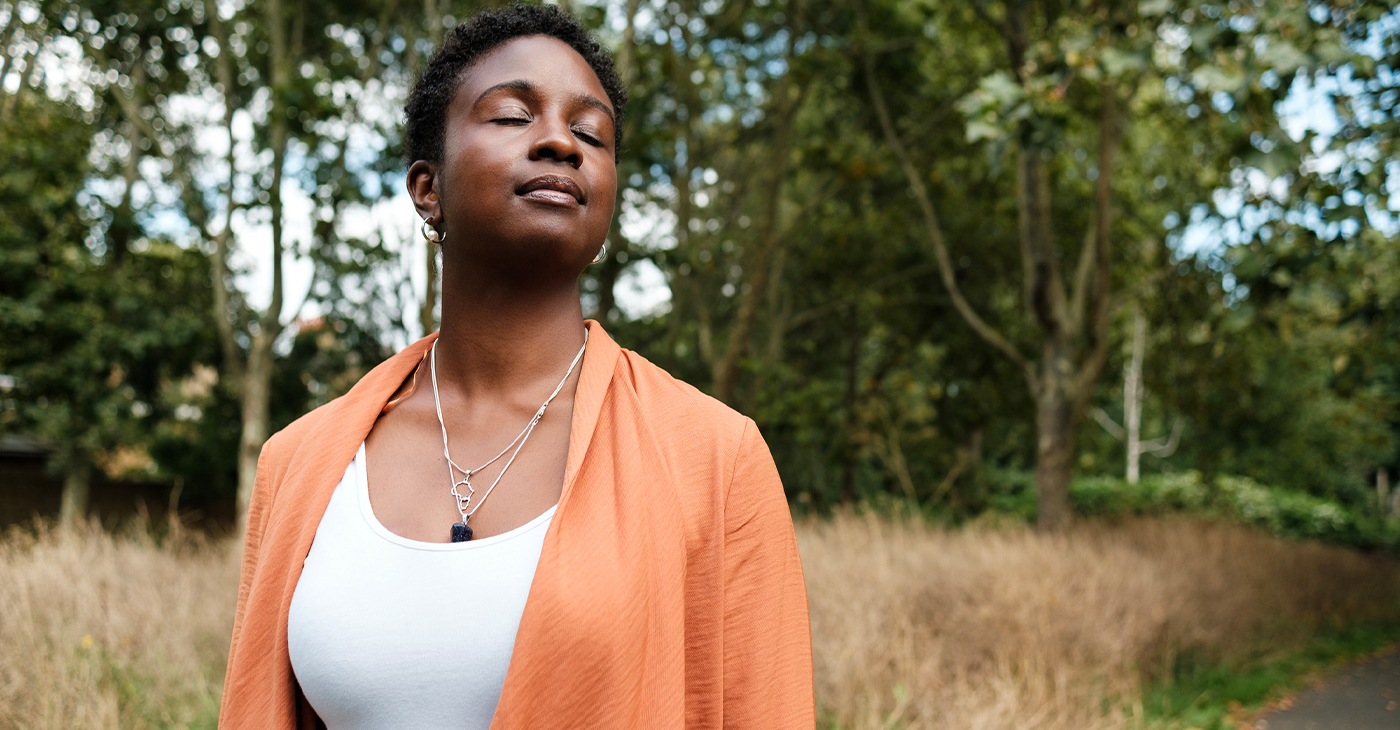
Special to The Post
The Women In The NAACP Oakland Branch is proud to announce the upcoming “Total You – Mind, Body, and Spirit Women’s Health Forum” scheduled for April 27 at Acts Full Gospel Church.
Running from 9 a.m.-2 p.m. at 1034 66th Ave., this forum aims to provide an empowering platform for women to engage in discussions, gain knowledge, and access resources pertaining to their health and well-being.
The forum will feature renowned experts, healthcare professionals, and advocates from Genentech, John Muir Health, Sutter Health of The East Bay, Kaiser Permanente, and the Alameda County Public Health Department.
Our expert panel will address various aspects of women’s health, including physical, mental, and emotional well-being, and healthy relationships. The forum will encompass a wide range of topics such as breast cancer, menopause, reproductive health, nutrition, mental health awareness, preventive care, and much more.
Participants will have the opportunity to attend informative sessions, interactive workshops, and panel discussions led by experts in their respective fields. Additionally, there will be wellness activities, screenings, and informational booths offering valuable resources and support.
This forum is open to women of all ages and backgrounds, encouraging inclusivity and diversity in the conversation surrounding women’s health. Whether you’re seeking information for yourself, a loved one, or simply looking to connect with other women, this event promises to be enlightening and empowering.
For more information and to register for the Total You Women’s Health Forum, please visit https://www.naacpoakland.org/ or contact Dr. Delores Thompson. WIN chairwoman at (510) 328-3638.
The Women In The NAACP Oakland Branch is dedicated to empowering women, and young teen girls. We look forward to your participation in this important event.
To register, go to https://www.naacpoakland.org/events/the-total-you-womens-health-forum
Alameda County
Oakland Conducts Its Biennial ‘Point in Time’ Homelessness Count
Oakland, along with other cities in Alameda County, conducted their biennial ‘Point In Time’ census count on Feb. 1 to gain a thorough understanding of the size and dispersion of the homeless population in the region. The Point In Time (PIT) count is federally required by the Housing and Urban Development Department as a requirement to receive funding and resources to tackle homelessness in the area.
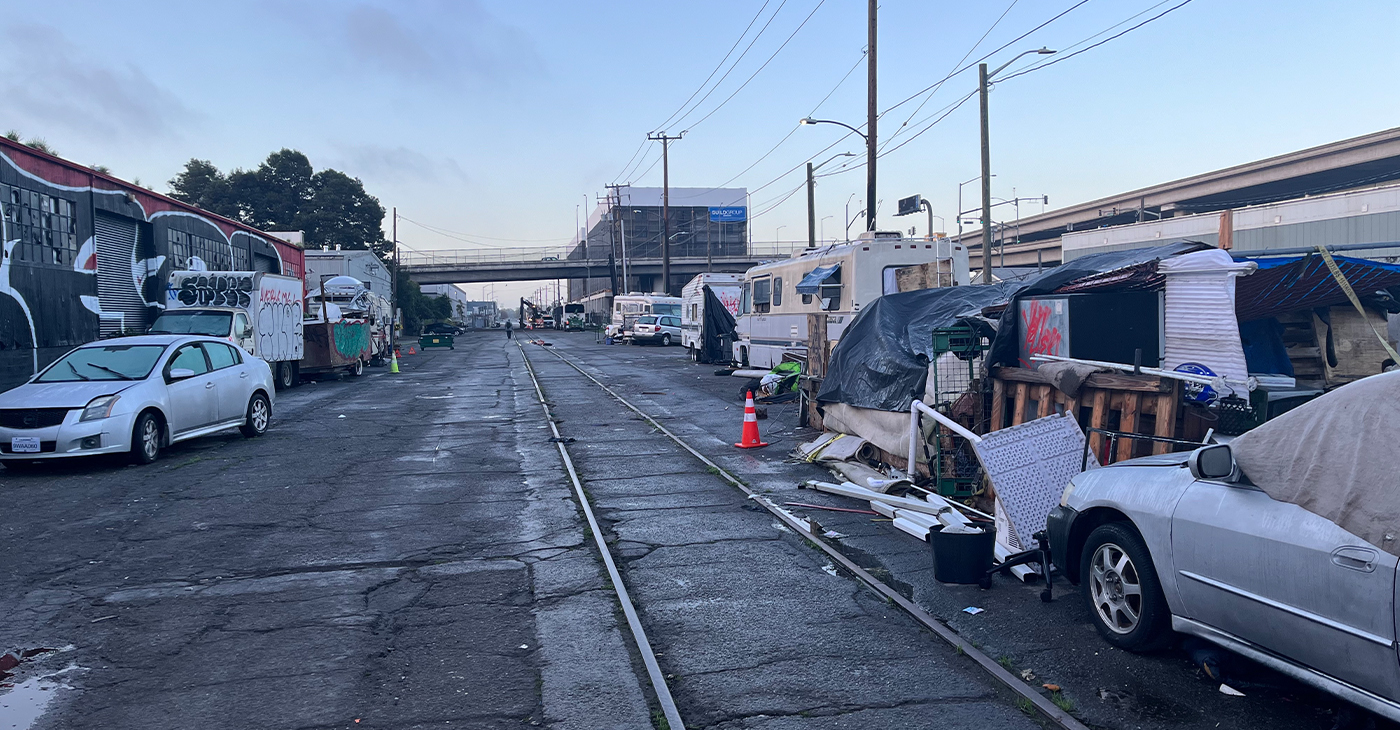
By Magaly Muñoz
Oakland, along with other cities in Alameda County, conducted their biennial ‘Point In Time’ census count on Feb. 1 to gain a thorough understanding of the size and dispersion of the homeless population in the region.
The Point In Time (PIT) count is federally required by the Housing and Urban Development Department as a requirement to receive funding and resources to tackle homelessness in the area.
David Modersbach, Grants Manager of Alameda County Health Care for the Homeless program, said that the methodology this time around was different, as this count had a much more personal “lived experience” aspect that previous counts did not have.
In 2022, the county relied more on statistical extrapolation and assumptions, but this year’s survey questionnaires allowed for details on substance abuse issues, how long someone has been living without proper housing, what resources people are in need of and much more.
“[The PIT count is] a critical opportunity for the county, Continuum of Care, and cities to understand the magnitude of homelessness in Alameda County. [The count] enables us to better allocate resources and implement effective programs to tackle this issue head-on in a compassionate and inclusive way,” Modersbach said.
St. Mary’s Center was one of the many meeting hubs across the county that hosted volunteers and community officials the morning of the count. The organization has been deeply involved in the effort to provide resources for unhoused people and others in need.
St. Mary’s is a nonprofit in West Oakland that helps seniors and preschool families with food and housing. Last year, the organization helped about 50 seniors find housing after they had fallen on hard times.
Sharon Cornu, executive director of St. Mary’s, said a lot of the older couples and individuals that come into the center have borne the brunt of the skyrocketing cost of living in the Bay Area. The most recent influx of seniors St. Mary’s has seen coming in for help has been made up of people who were evicted when the COVID-19-related moratorium on rent payment ended.
“Seniors are the fastest growing segment of the unhoused and the incredibly high cost of housing is driving them to the streets,” Cornu said.
Among the volunteers were workers with Operation Dignity, a nonprofit organization that helps veterans and those living on the street find shelter, transitional housing and supportive services.
“These are our stomping grounds,” Ivan Magana, program manager for Operation Dignity said.
Magana stated that his team was extremely familiar with the people residing in the encampments they were conducting the count in since Operation Dignity made many visits to these areas while doing community outreach. He said they had even informed some of the unhoused people they knew about the count a few days prior so they would not be alarmed when the enumerators showed up early in the morning to conduct the count.
Not everyone got the memo though, as the volunteers encountered an almost violent situation around the 6 a.m. when a young woman living in a bus yelled at the Operation Dignity workers to leave her alone.
Luckily, the three-year experience Mangana has working with Operation Dignity and his knowledge of therapeutic health services, equipped him with the techniques needed to deescalate the tension. The woman soon realized who the volunteers were and apologized, he said.
Another volunteer and Operation Dignity worker, Yolanda Kirkpatrick, noted that she was initially hesitant because of the early schedule. She felt the time deterred others from participating, too.
Her prediction would come true as the hours went on and they continued to walk along 24th St in downtown Oakland and there was very little activity on the streets.
The volunteers shared similar sentiments. Although the community the people they were engaging for the count and surveys encounter tend to distrust outsiders, the PIT count was necessary for the city to receive the appropriate level of federal funds to address a crisis that is spiraling out of control in California.
A full analysis and report of the count will be made available in the summer.
Community
For Cervical Cancer Month, Medical Community Focused on Education
January was Cervical Cancer Awareness Month. Physicians, advocates and others in the medical community commemorated the month by raising awareness about a form of cancer they say is highly preventable and treatable. Cervical cancer is caused by a virus called the human papillomavirus (HPV) and it develops slowly over time but can be prevented with proper care in girls as young as 13 years old.

By Magaly Muñoz
January was Cervical Cancer Awareness Month.
Physicians, advocates and others in the medical community commemorated the month by raising awareness about a form of cancer they say is highly preventable and treatable.
Cervical cancer is caused by a virus called the human papillomavirus (HPV) and it develops slowly over time but can be prevented with proper care in girls as young as 13 years old.
Sonia Ordonez, an OBGYN and gynecology surgeon at Kaiser Permanente, stated that as soon as people with cervixes reach the maturity reproductive age, they should start taking preventative measures like getting the HPV vaccine. The vaccine involves a series of two-doses for people aged 9 through 14 or three-doses for people 15 through 45 years old.
“I see a lot of young women who can’t remember or may not have gotten [the vaccine] when they were younger, or maybe got one, but we can give them the series of vaccines and restart at any point in time,” Ordonez said.
She said that cervical cancer is not the only cancer caused by HPV. Strains of the virus can also lead to throat, anal and penile cancers.
Screening is also an effective way to check for cervical cancer and should be done every three years after someone turns 21, doctors recommend. It is best to start as early as possible to catch occurrences early.
Ordonez said that this cancer is also more likely found in people of color and has led to more deaths overall.
A Mayo Clinic article published last month stated that Black women are more likely to be diagnosed and die of cervical cancer, compared to White women in the U.S.
2,000 Black women are diagnosed every year with cervical cancer and 40% die as a result.
“This disparity is not due to genetic differences among White, Black or Hispanic women, but rather related to systemic racism, access to healthcare and socioeconomic factors,” Dr. Olivia Cardenas-Trowers, a Mayo Clinic urogynecologist, said in the article.
Ordonez stated that immigrant women are also highly susceptible to the cancer, as many Latin American countries may not have accessibility to screenings or lack of insurance makes it harder for them to get tested.
Hispanic women are 40% more likely to be diagnosed with cervical cancer, and 30% more likely to die from it, as compared to non-Hispanic White women, according to the Office of Minority Health.
Family medicine physician, Joy Anyanwu, stated that the pandemic contributed to hesitancy about getting cervical cancer screenings among some women. Other factors are people’s aversion to vaccines, parents not wanting to believe that their children are or will become sexually active, and doubt about the overall effectiveness of the vaccine.
“The vaccine is very safe — over 97% effective in preventing cervical cancer,” Anyanwu said. “Even if you aren’t having sex, the earlier you start would actually help.”
Anyanwu said she understands that parents might not want to ask questions about their children’s reproductive health, but it’s a mindset that can be a barrier to having important conversation about prevention or care.
To keep families their families and communties healthy, the doctor emphasized that people should prioritize keeping up with their vaccine series and going to screenings every year.
-

 Activism4 weeks ago
Activism4 weeks agoOakland Post: Week of March 27 – April 2, 2024
-

 #NNPA BlackPress4 weeks ago
#NNPA BlackPress4 weeks agoBeloved Actor and Activist Louis Cameron Gossett Jr. Dies at 87
-

 Community2 weeks ago
Community2 weeks agoFinancial Assistance Bill for Descendants of Enslaved Persons to Help Them Purchase, Own, or Maintain a Home
-

 Activism3 weeks ago
Activism3 weeks agoOakland Post: Week of April 3 – 6, 2024
-

 Business2 weeks ago
Business2 weeks agoV.P. Kamala Harris: Americans With Criminal Records Will Soon Be Eligible for SBA Loans
-

 Activism2 weeks ago
Activism2 weeks agoOakland Post: Week of April 10 – 16, 2024
-

 Community2 weeks ago
Community2 weeks agoAG Bonta Says Oakland School Leaders Should Comply with State Laws to Avoid ‘Disparate Harm’ When Closing or Merging Schools
-

 Community1 week ago
Community1 week agoOakland WNBA Player to be Inducted Into Hall of Fame

